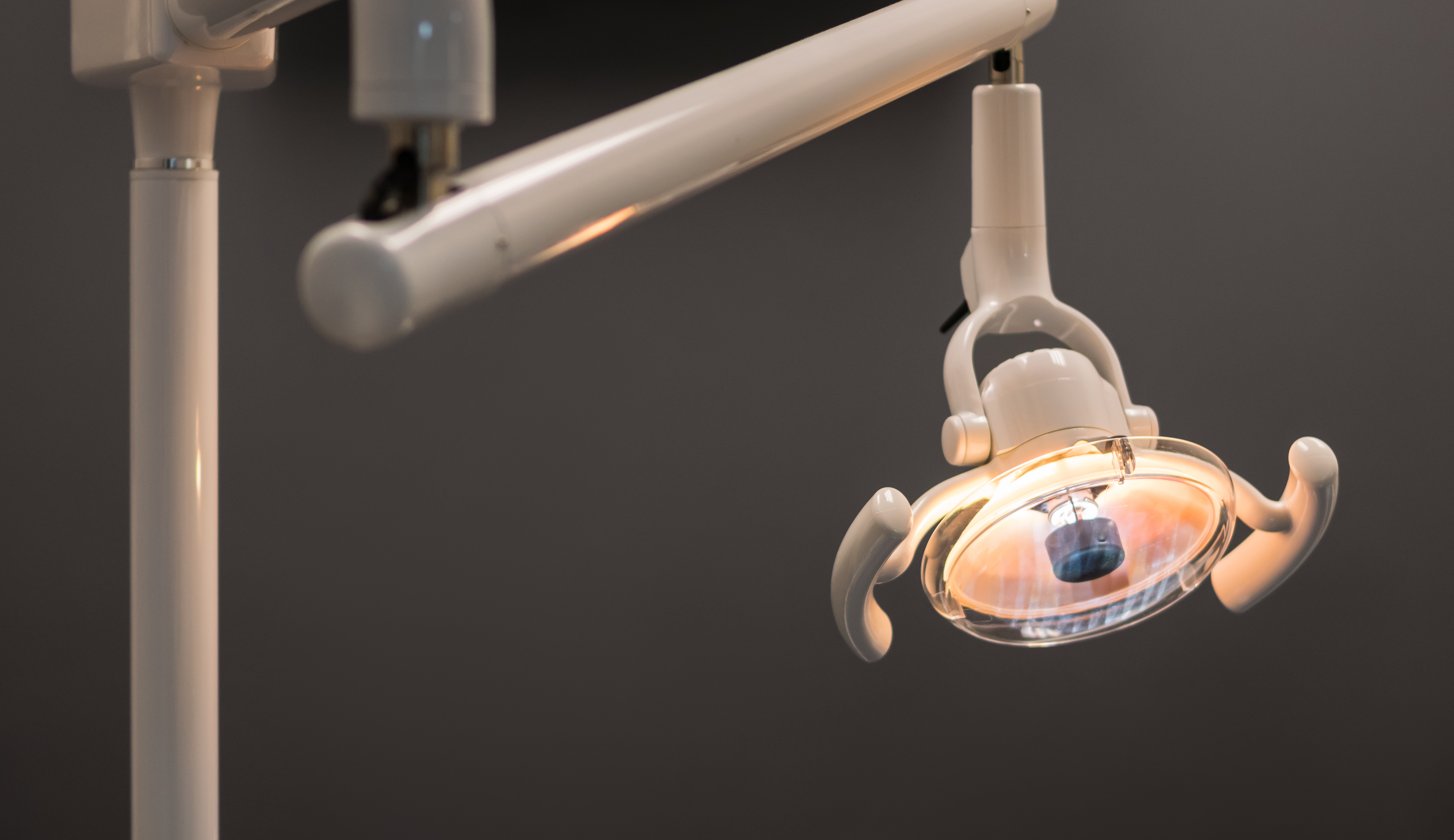 The right light not only affects your ability to diagnose and treat with accuracy, but also influences workflow efficiency, patient comfort, and even your team's long-term eye health. As dental technology advances, many clinicians are evaluating whether to upgrade from traditional halogen lights to newer LED operatory lights—or wondering if halogen still has a place in the modern operatory.
The right light not only affects your ability to diagnose and treat with accuracy, but also influences workflow efficiency, patient comfort, and even your team's long-term eye health. As dental technology advances, many clinicians are evaluating whether to upgrade from traditional halogen lights to newer LED operatory lights—or wondering if halogen still has a place in the modern operatory.
Halogen Lighting: Tried, True, and Familiar
Halogen lights have been a staple in dental operatories for decades. They produce a warm, consistent light and offer good color rendering—important for shade matching and tissue evaluation. Because of their familiarity, many dental professionals are comfortable using halogen lights and appreciate their straightforward design.
However, halogen bulbs have a few well-known drawbacks. They generate a significant amount of heat, which can be uncomfortable during longer procedures—for both patients and clinicians. They also consume more energy than LED alternatives and require more frequent bulb replacements, adding to long-term maintenance costs. Additionally, halogen lights typically have fixed intensity levels, which limits their flexibility in adapting to different procedures or lighting preferences.
LED Lighting: Efficiency Meets Precision
LED (light-emitting diode) technology has gained widespread traction in recent years, and for good reason. LED operatory lights provide bright, focused illumination with minimal heat output, making the working environment more comfortable. One of their most significant advantages is energy efficiency—LEDs consume far less power than halogen bulbs and can last tens of thousands of hours before needing replacement.
Clinically, LEDs offer high color rendering index (CRI) values—often comparable or superior to halogen—allowing for accurate shade selection and detailed soft tissue visualization. Many models come with adjustable intensity settings and even color temperature options, giving clinicians the ability to fine-tune lighting based on the procedure at hand.
From a sustainability and cost-saving perspective, LED lights also win points. Although the initial purchase price may be higher than halogen units, the reduced energy use and maintenance requirements typically lead to lower costs over time.
Clinical Considerations and Workflow Impact
When comparing the two systems, it’s essential to consider how lighting affects visual clarity, shadow control, and eye strain. LED lights typically offer better uniformity of illumination and fewer shadows in the working field. This can improve procedural accuracy, reduce fatigue, and help maintain a high standard of care throughout the day.
For clinicians who spend long hours under the light, LED’s cool, consistent output is a welcome shift from the warmth—and sometimes glare—of halogen. Furthermore, many LED systems are now designed with sensor activation or touchless controls, improving infection control and reducing chairside interruptions.
Cost vs. Value: A Practical Evaluation
While halogen lights generally come with a lower upfront cost, the long-term value of LED systems often outweighs that difference. Factor in bulb replacements, energy consumption, and time lost to equipment maintenance, and LED systems typically emerge as the more economical choice over several years.
Still, for practices looking for a short-term solution or those with limited budgets, halogen lighting remains a viable and functional option—especially if you already have compatible fixtures in place.
Ultimately, the best operatory light is the one that supports your clinical accuracy, patient comfort, and workflow efficiency. Whether you choose LED or halogen, understanding the strengths and limitations of each system will help you make an informed decision that elevates the quality of care in your practice.



